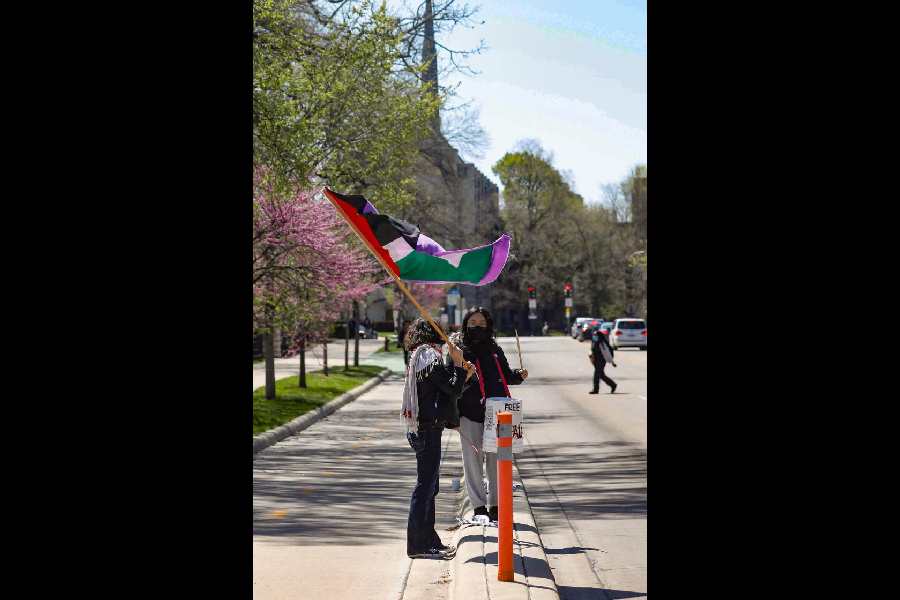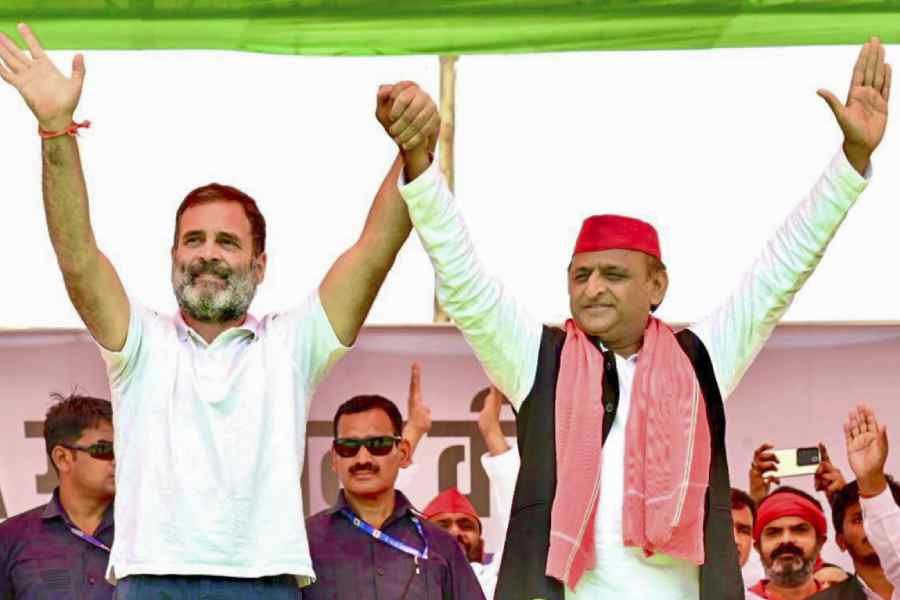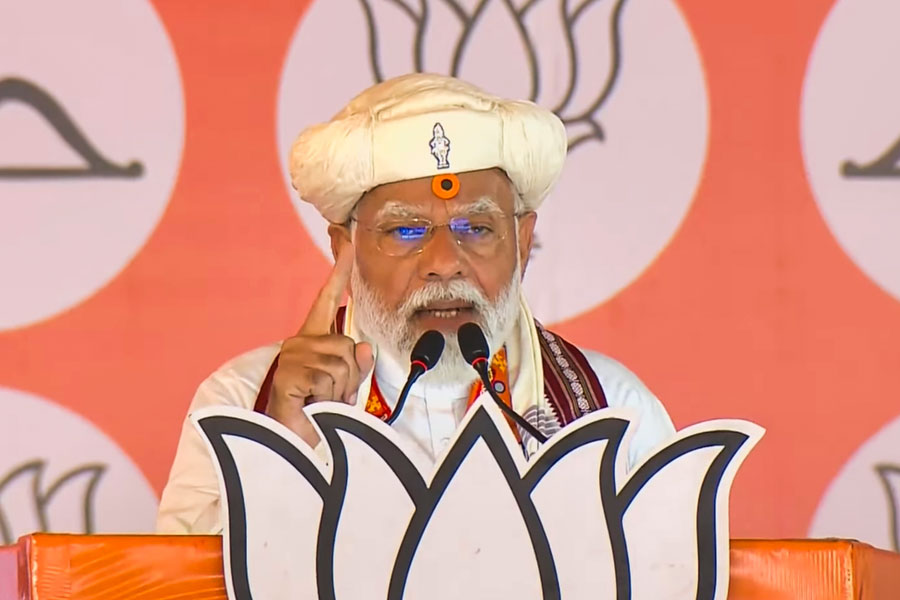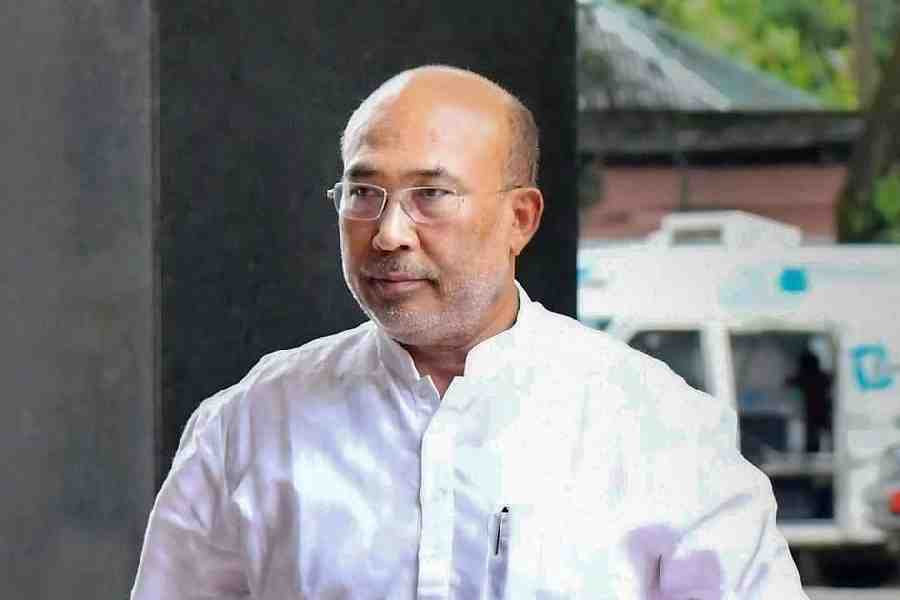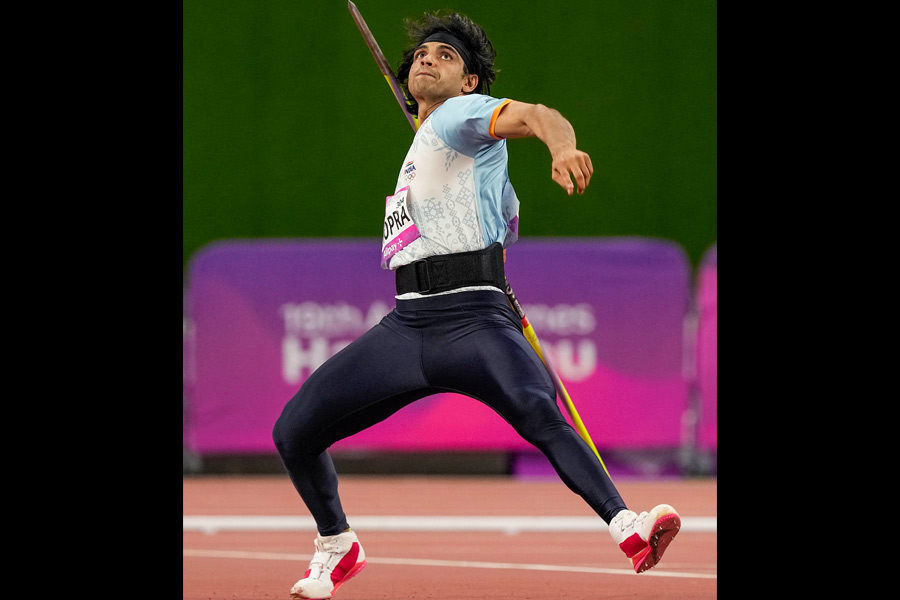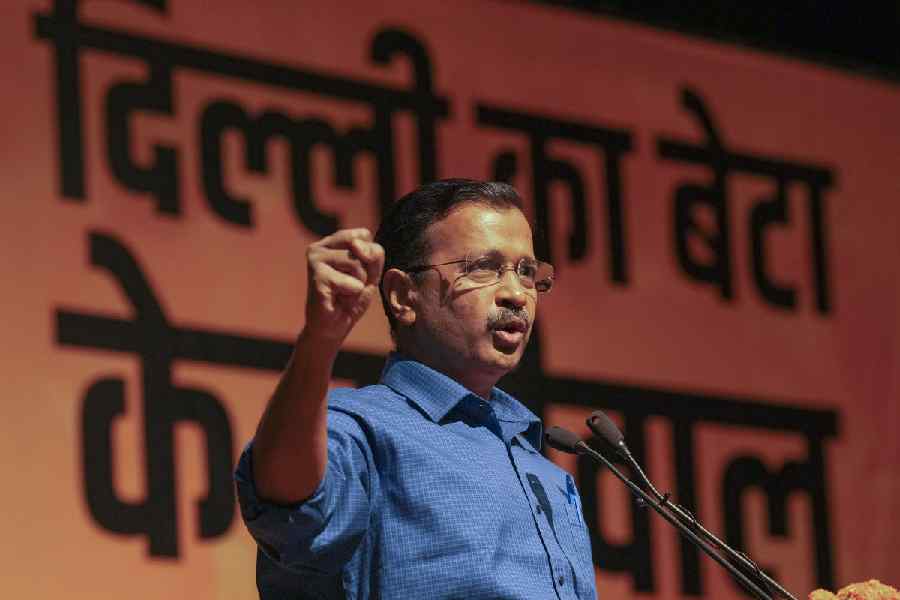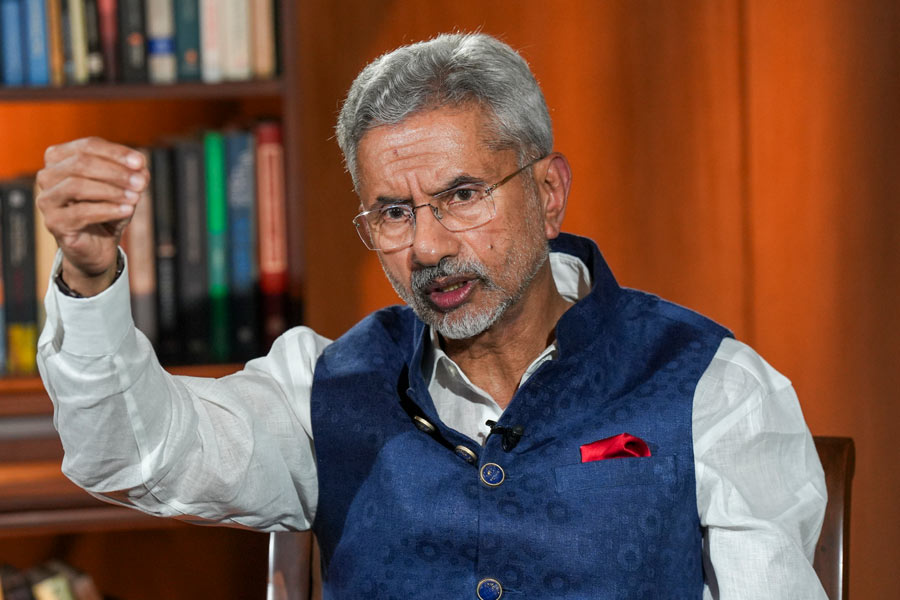On Wednesday morning, on a corner across the street from Columbia University, a man dressed in black with a huge gold cross around his neck brandished a sign that featured a bloodstained Israeli flag and the word, ‘genocide’, in capital letters. I watched as a pro-Palestine protester approached the man. “That is horribly antisemitic,” she said. “You are hurting the movement and you are not a part of us. Go away.”
Hours later, a well-known congressional reporter covering the visit to Columbia’s campus by the House Speaker, Mike Johnson, posted a photograph of the same man. “One sign here at the Columbia protest,” the reporter, Jake Sherman, wrote. “This man is ranting about Jews controlling the universe.”
The man wasn’t “at the Columbia protest.” The university’s campus has been closed to outsiders for over a week. He was, several people on social media told Sherman, a well-known antisemitic crank unconnected from what was unfolding on campus. The incident is emblematic of how difficult it has become to make sense of what is actually happening on college campuses right now. As the protests spread to dozens of campuses, competing viral clips on social media paint vastly different versions of what’s happening inside these pro-Palestine camps. Are they violent conflict zones filled with militant protesters who hurl antisemitic abuse and threaten Jewish students requiring, as some political leaders have suggested, the deployment of the National Guard? Or is it a giant lovefest of students braiding daisy chains and singing “Kumbaya”?
I tried to figure this out the only way I know how: by reporting. I happened to have been on campus on the day Columbia’s president, Minouche Shafik, decided to call in the New York Police Department to clear the protesters from campus. I returned a week later to spend the day reporting on the protests and the mood on campus.
What I saw were moving, creative and peaceful protests by people seeking to end the slaughter in the Gaza Strip. I also saw things that left me quite troubled and heard from Jewish students navigating a campus fraught with emotions. But while reporting on the protests gave me insight into how unsettling some aspects of activism can be, it doesn’t mean the protesters’ actions are misguided.
In the days since Shafik called for the NYPD to break up protests, copycat encampments have sprung up on dozens of campuses and at least 17 of them have faced police intervention. My social media feeds have been filled with horrifying images of students and professors being violently dragged away by the police.
During his visit to the campus, Johnson made it clear what he thought was happening there. He all but called the university a war zone and declared the protests as antisemitic, conflating, as many proponents of Israel do, opposition to Israel’s policies with hatred of Jews.
While Johnson was meeting with a group of Jewish students, I was wandering among the agitators, who have been camping out on a lawn on campus. In one corner of the encampment, a small group of students sat cross-legged, discussing the poem, “Kindness”, by the Palestinian-American poet, Naomi Shihab Nye. Another group had broken out art supplies to reapply the paint to their Gaza Solidarity Encampment banner. Others were napping or doing yoga. There was a well-stocked food tent, with options for all — gluten-free, vegan, nut-free and more. I have spent more than my share of time in war zones. This felt more like an earnest folk music festival.
On campus, I spoke to Muslim and Arab students who told me how frightened and angry they are. I spoke to Jewish students who participated in the pro-Palestine protests and scoffed at the notion that the protests endanger them. I also spoke to Jewish students who told me that they feel the protests target them as Jews.
Whether you are watching student protesters on social media or experiencing the protests in person, the way you understand these protests depends on your perception of what they are protesting against. If you feel that what is happening in Gaza is a moral atrocity, the student protests will look like a brave stand against American complicity in what they believe is genocide. If you feel the war in Gaza is a necessarily violent defence against terrorists bent on destroying the Jewish State, the students will seem like collaborators with murderous antisemitism — even if many of them are Jewish.
While Jewish students who object to the pro-Palestine encampment navigate fear and uncertainty, those inside the camp are facing a different type of threat. Jared, a Jewish student, participating in the protests, had given an interview in which his full name appeared. He said someone in his family had received a threatening voicemail.
Just outside the campus gates, the scene was more tense. The protests have become a destination for opportunists of all kinds. Gavin McInnes, the right-wing founder of the Proud Boys, turned up. Christian nationalists descended on Columbia to stage their own, ostensibly pro-Israel, protest, screaming through the campus gates to the student protesters inside.
At times I saw pro-Israel protesters seek to provoke pro-Palestine groups into confrontations. A white-haired man in a khaki military-style shirt with a small Israeli flag stitched onto the chest approached a group of protesters I was interviewing just off campus. They were standing around, not chanting or holding signs. “Israel has had 400 Nobel Prize winners,” he falsely claimed (13 Israelis have won the prize), tapping the flag. “How many has your side won?” One of the protesters, a man with a keffiyeh wrapped around the top of his head, replied: “I don’t care about Nobel Prizes right now. I care about dead Palestinian babies.”
Interactions like those make up the flood of ‘evidence’ we’re seeing online, much of it placed there by the moral combatants themselves. Some videos, like one that supposedly depicted a Jewish Yale student getting stabbed in the eye by a Palestinian flag, turn out to be misleadingly portrayed by the victim. Others depict what appears to be clear harassment of Jewish students, such as the one filmed outside the gates of Columbia’s campus where a protester shouted “go back to Poland” at Jewish students, and another declared that October 7 would happen “10,000 times.” Many videos show peaceful, even joyful, protests, or feature Jewish students who support the pro-Palestine protests and declare that they feel safe on campus. What are we to make of these competing claims? I understand the desire to fixate upon some singular piece of evidence that will decode, definitively, their moral core. But there is plenty of evidence ready-made for any side to claim moral high ground here.
The protests are on the whole peaceful but it must be acknowledged that problematic things are being said. After the arrest of more than 100 New York University protesters, demonstrations outside police headquarters went on all night. I live nearby and went down to see the protest for myself. It was a different vibe from the night the Columbia students had been arrested. There were more chants, delivered with much tighter unison and at greater volume. “From the river to the sea, Palestine is almost free”; “Move, cops, get out the way, we know you’re Israeli trained”; “There is only one solution, intifada revolution”. I winced upon hearing the last chant. Not so much the word intifada, which has many meanings and intonations depending on the context. But why choose the word, ‘solution’, one so redolent of the Nazis’ ‘final solution’?
Pretending that there is no antisemitism in the movement is foolish and self-defeating. Antisemitism is widespread, not to mention on the American Right. It stands to reason that there are some people who hold antisemitic views among a mass movement of protesters.
It is easy when looking back to remember the fight for a good cause as pure even if it did not seem so at the time. In the same way, we now remember the Vietnam War as an American tragedy. The students at Columbia University who protested, it seems in retrospect, had been right. But our memories elide some of their more outré tactics. A list of popular chants employed by anti-war protesters at a time when thousands of American soldiers were dying each year fighting in the war included things like “One side’s right, one side’s wrong, We’re on the side of the Viet Cong!” and “Save Hanoi, Lose Saigon, Victory to the Viet Cong!” These slogans are sickening. But by 1968, when the protests reached their peak, the US government had realised, according to the Pentagon Papers, that the war was all but unwinnable. Yet its brutal killing machine ground on for another five years, and an additional 38,000 Americans and countless more Vietnamese, Cambodian and Laotian people died pointless deaths in a futile war.
There are clear signs that Israel is pursuing a war just as brutal and unwinnable as the US did back then. Some people might not like the slogans, tactics or proposals of today’s pro-Palestine protesters. But the truth is that a majority of Americans have qualms about Israel’s pitiless war to root out Hamas whatever the consequences for civilians. As politicians send riot police onto campuses to try to smother a new protest movement, we’d do well to keep in mind why we’ve forgotten the ugliest aspects of the Vietnam protests: those memories have been replaced, instead, by an enduring horror at what we did.
New York Times News Service

